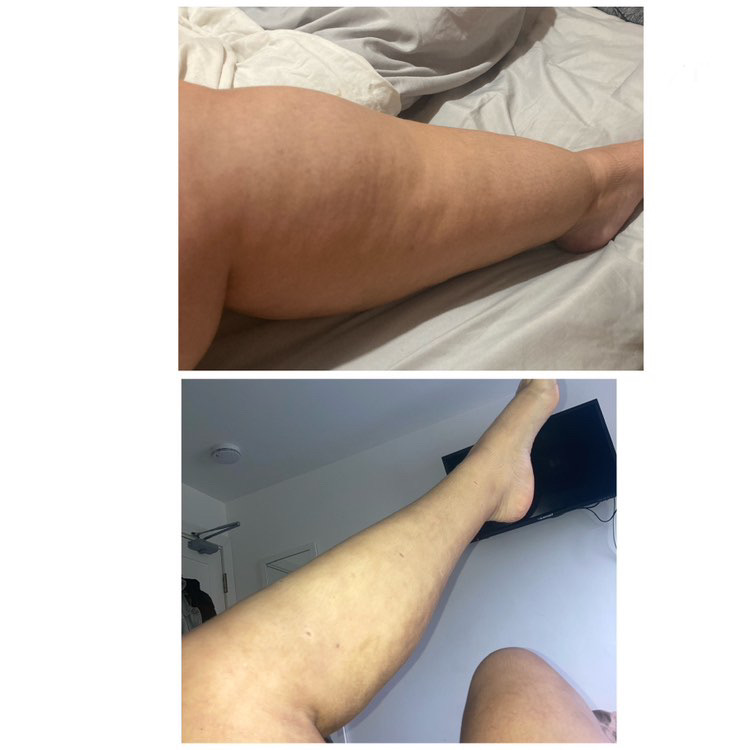Liposuction is known to be the only way to completely remove Lipedema fat – but not all liposuction is created equal.
Women with Lipedema need techniques that protect the lymphatic system, reduce trauma, and preserve long-term function. That’s where WAL liposuction comes in.
WAL stands for Water-Assisted Liposuction, and it’s one of the most recommended surgical techniques for treating Lipedema safely and effectively.
What Is WAL Liposuction?
WAL stands for Water-Assisted Liposuction, a specialised technique that uses a gentle stream of water to dislodge fat cells before they’re suctioned out.
The water loosens the fat without damaging surrounding tissues such as:
- Lymphatic vessels
- Blood vessels
- Nerves
This makes WAL particularly effective for conditions like Lipedema, where preserving the lymphatic system is critical.

How Does WAL Differ from Traditional Liposuction?
With traditional liposuction, fat is manually broken up using forceful cannulas – which can lead to more trauma, bleeding, and a longer recovery.
WAL vs Traditional Liposuction:
|
Feature |
WAL Liposuction |
Traditional Liposuction |
|
Fat removal method |
Gentle water jet |
Manual breaking of fat |
|
Lymphatic protection |
Yes – minimal damage |
Higher risk of damage |
|
Pain & swelling |
Typically lower |
Often higher |
|
Suitability for Lipedema |
Excellent |
Risky unless adapted |
|
Recovery time |
Faster in many cases |
Slower |
Why Is WAL Recommended for Lipedema?
WAL liposuction is considered one of the safest and most effective options for Lipedema for several reasons:
- Lymph-sparing – reduces the risk of secondary Lymphedema and Lipedema
- Less trauma to surrounding tissues
- Shorter recovery times for many patients
- Less blood loss
- More precise fat removal, especially in tricky areas like knees and calves
Because Lipedema fat is fibrotic and painful, using a technique that minimises trauma makes the entire process safer and more comfortable – both during and after surgery.
What Is the WAL Procedure Like?
Here’s a rough breakdown of what happens with WAL liposuction:
- General or local anaesthesia or light sedation (depending on the surgeon and country)
- A small cannula delivers a fan-shaped stream of tumescent fluid to dislodge fat
- Fat is immediately suctioned out as it’s released
- The water jet continues to flush the area and protect lymphatic vessels
- No need for aggressive scraping – the water does the work
The result: more gentle fat removal with less tissue damage.
Recovery After WAL Liposuction
Like any surgery, WAL recovery varies – but it’s often faster and less painful than traditional liposuction.
Most women report:
- Bruising and swelling for the first few weeks
- Need for Lipedema compression garments 24/7 for several months
- Temporary numbness or tightness
- Improved mobility within days or weeks
You’ll likely need 4-6 weeks to feel ‘normal’ again and many surgeons recommend spacing procedures 3-6 months apart if multiple rounds are needed.
Is WAL Liposuction Enough on Its Own?
WAL can dramatically reduce Lipedema fat, improve pain, and restore mobility – but it’s not a cure for Lipedema.
You’ll still need:
- Ongoing compression garments
- Healthy movement
- Lymphatic care
- An anti inflammatory diet for Lipedema
Think of it as a powerful tool in your overall Lipedema care plan.
How Much Does WAL Liposuction Cost?
WAL is a specialist technique and usually more expensive than standard liposuction.
Depending on the country and clinic, expect:
- £5,000–£10,000 per round in the UK
- €5,000–€12,000 in Europe
- $8,000–$15,000+ in the U.S.
Check out our full breakdown here: Lipedema Surgery Cost
What Is WAL Liposuction and Is It Right for You?
WAL liposuction is one of the most trusted and lymph-sparing techniques to treat Lipedema surgically. It’s more gentle, more precise, and better suited to the unique needs of Lipedema patients than traditional techniques.
If you’re considering Lipedema Reduction Surgery, make sure your surgeon uses WAL or another lymph-sparing method, and always ask about:
- Their experience with Lipedema
- How many procedures you may need
- What’s included in the cost
- What recovery will look like
If you need help finding a trusted provider, explore our Find a Lipedema Surgeon Directory to browse feedback from real patients.
Disclaimer: My blogs talk about Lipedema, diet, surgery and much more. I’m talking from my point of view to help women, and remind them they are not alone. I am not a medical professional, so the content above is from my own perspective with research I have done into the topic. It’s not meant as medical advice, you should always consult your doctor or a specialist for both your diagnosis, and a treatment plan.

